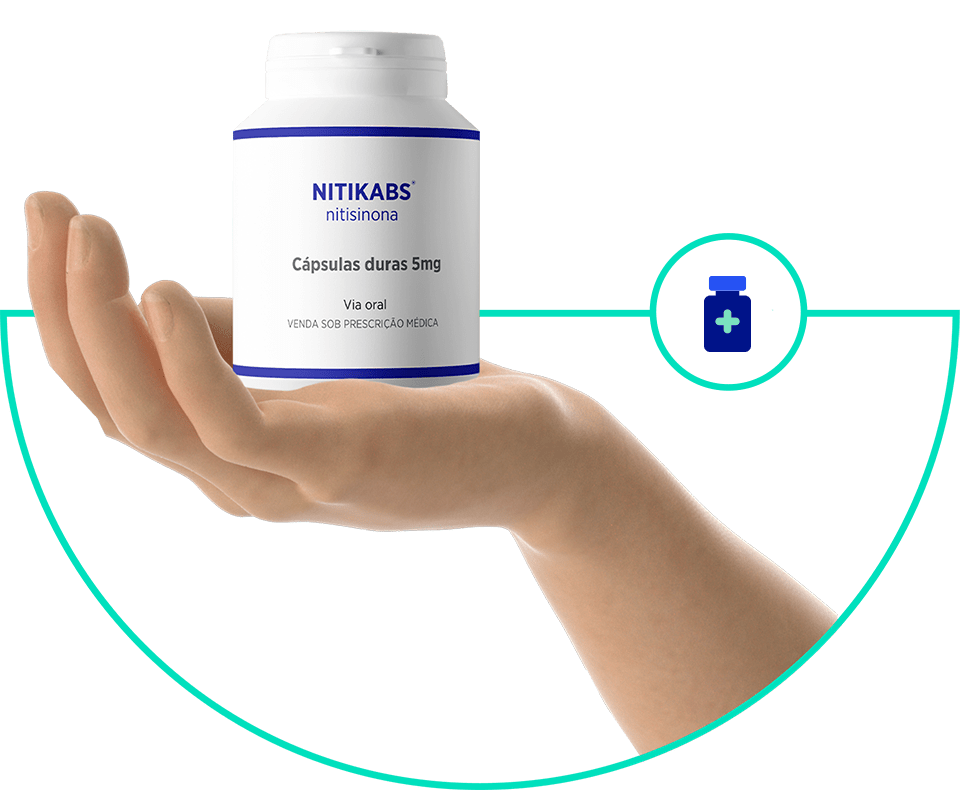PHARMEDIC PHARMACEUTICALS WAS THE FIRST BRAZILIAN COMPANY TO PROVIDE TYROSINEMIA PATIENTS ACCESS TO SAFE AND EFFECTIVE TREATMENT

PHARMEDIC PHARMACEUTICALS WAS THE FIRST BRAZILIAN COMPANY TO PROVIDE TYROSINEMIA PATIENTS ACCESS TO SAFE AND EFFECTIVE TREATMENT
PASSIONATE ABOUT LIFE.
The incessant search for safe and effective treatments made Pharmedic Pharmaceuticals the first Brazilian company to obtain registration with ANVISA for the treatment of Tyrosinemia. NITIKABS provides patients with greater autonomy and quality of life.


Tyrosinaemia type 1 is an innate error of amino acid metabolism characterized by hepatorenal manifestations. The acute early presentation form of the disease manifests between 15 days and 3 months after birth with hepatocellular necrosis associated with vomiting, diarrhea, jaundice, hypoglycemia, edema, ascites, and gastrointestinal bleeding. Septicemia is a frequent complication.
Renal tubular dysfunction can occur and is associated with phosphate loss and hypophosphatemic rickets. There is also a late presentation form that manifests with vitamin D resistant rickets caused by renal tubular dysfunction. If left untreated, the acute form of the disease can generate neurological crises with porphyria, polyneuritis, and dystonia. Hepatocarcinomas are also frequent.
The diagnosis is confirmed by detecting increased urinary excretion of delta-aminolevulinic acid, while on gas chromatography it is diagnosed by the presence of a characteristic urinary profile showing increased levels of succinylacetone. Tests for FAH activity in fibroblasts are also available and can be useful for diagnosis.
Prenatal diagnosis is possible by metabolite analysis, enzyme studies, or by molecular genetic testing for families in which the disease-causing mutation has already been identified.
Treatment involves the administration of nitisinone – NITIKABS.
Tyrosinemia type 2 is an innate error of tyrosine metabolism characterized by hypertyrosinemia with oculocutaneous manifestations and, in some cases, cognitive impairment. The presentation is variable, but ocular symptoms (hyperemia, photophobia, pain, and excessive tearing) usually develop in the first year of life. Ocular signs include corneal opacification with bilateral dendritiform corneal lesions (pseudodendritic keratitis), neovascularization, corneal ulceration, and scarring that can lead to decreased visual acuity. Cutaneous manifestations usually begin after the first year of life. Skin lesions consist of non-pruritic, hyperkeratotic papules and plaques located mainly on the palms and soles (palmoplantar hyperkeratosis). These lesions are painful, progressive, and are often associated with hyperhidrosis. Central nervous system (CNS) involvement is highly variable with the most common manifestation being cognitive impairment (ranging from mild to severe). Other signs of CNS involvement include behavioral problems, nystagmus, tremor, ataxia, and seizures.
The diagnosis is established based on clinical features and the detection of elevated plasma, urinary tyrosine and elevated urinary tyrosine metabolite levels. TAT assays on liver biopsy specimens are usually not necessary for diagnosis. Some patients with tyrosinemia type 2 can be identified through the neonatal screening program.
Treatment consists of dietary restriction of phenylalanine and tyrosine. Oral retinoids may also be administered for the treatment of skin lesions. Controlled diet results in reduced plasma tyrosine levels and rapid resolution of oculocutaneous manifestations.
Tyrosinaemia type 3 is an innate error of tyrosine metabolism characterized by mild hypertyrosinaemia and increased urinary excretion of 4-hydroxyphenylpyruvate, 4-hydroxyphenylactate, and 4-hydroxyphenylacetate. It is the least frequent form of the disease, with less than 20 cases described in the literature so far.
As for diagnosis, the clinical picture is very variable (from asymptomatic in patients identified through neonatal screening program studies, to patients with neurological manifestations, including cognitive impairment and ataxia).
Although the clinical picture is variable, the recommended treatment is that patients with tyrosinemia type 3 follow a phenylalanine- and tyrosine-restricted diet.
Get in touch
“Beyond keeping me up to date on the progress of the processes. The goods delivered were always as requested, and I consider that the prices charged were within the market reality. It is a company that I recommend“.
Mr. Celso – Individual

